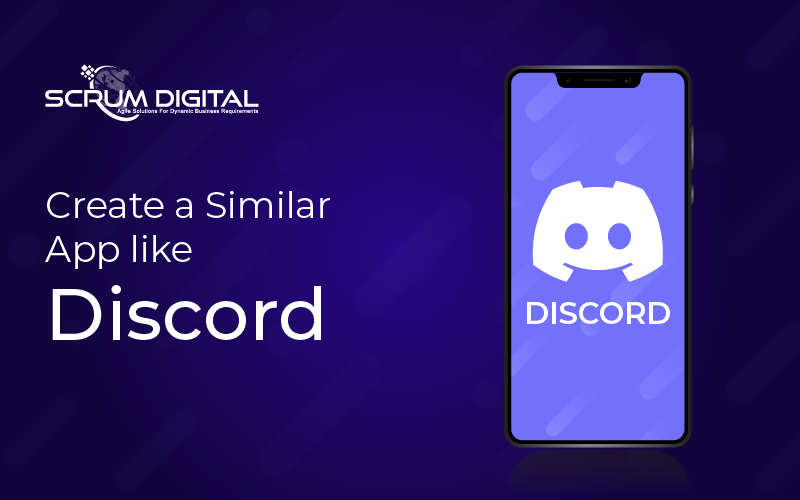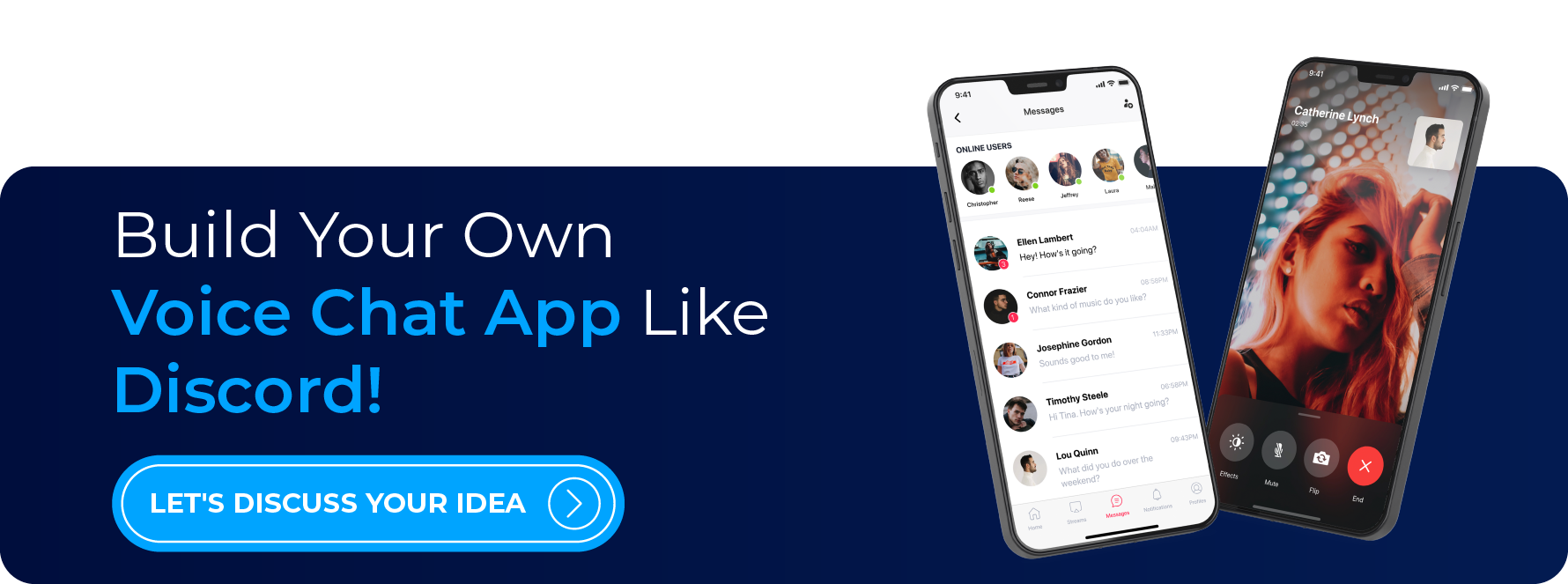Discord has rapidly grown in popularity as a social platform that brings people together to communicate and collaborate globally.
Its user base spans interests and demographics, from gaming enthusiasts to remote work teams. As a result, the company has become a household name in online communication and has raised millions of dollars in funding from investors.
If you’re exploring ways to earn while using technology, consider apps like Discord and others that help users monetize their time. For instance, a make money app could open up opportunities to generate income through innovative features and collaborative tools.
However, the question remains, how does Discord make money? Is it through traditional revenue streams like advertising or subscription-based models, or does it rely on other creative methods? This blog post will explore Discord’s business model and unpack its revenue-generating strategies.
If gaming is your passion, there are also game apps to make money that combine fun and earning potential. Platforms like these show how the digital world is evolving to empower users financially while keeping them entertained.
We will delve into the platform’s monetization methods, partnerships, and prospects to comprehensively understand how Discord makes money. So, let’s jump in and explore the world of Discord and its business model!
What is Discord?
Discord is a specialized chat application that caters primarily to video game players, providing them with various communication options such as text, voice chat, and video calls. It can be easily accessed on Android, iPhone, Mac, Xbox, PlayStation, and PCs.
Discord’s key feature is the ability to organize users into “Discord Servers,” similar to Slack groups. These servers consist of various channels allowing discussions and coordination on multiple topics.
Users can join up to 100 servers, with public servers accessible via a link and private servers requiring invites and approval. Additionally, each server can contain up to 500 channels.
For those interested in exploring opportunities to earn, there are various make money app platforms that can integrate with community-based setups, making Discord a great space for sharing ideas and experiences.
For those who prefer one-on-one interactions, Discord provides a direct messaging option. The application also integrates with other platforms, such as YouTube, Spotify, and GIPHY, allowing users to share third-party content.
If you’re a fan of interactive tools, you might also enjoy exploring game apps to make money, which are increasingly being discussed and shared within many Discord communities.
However, it’s worth noting that Discord isn’t exclusively for gamers – the app is also used by various communities, ranging from book clubs to dance classes, to discuss various topics and organize events.
With over 150 million active users and 19 million active servers at any given time, Discord has quickly become a popular platform for online communication and collaboration.
Discord Business Model

Discord’s business model focuses on providing a seamless and secure communication platform for its 87 million customers, primarily gamers. The Discord mobile application is free, and the company does not charge additional fees for future perspectives or notable features.
The company is dedicated to enhancing the gaming experience by providing high-quality voice chat integration services. It has gone a step further by developing a free tool, Gamebridge, to assist developers in integrating the platform with various games.
Discord offers several other features, including Streamkit and Rich Presence, which allow gamers to showcase their games and list their matches on the mobile application, which is free.
Discord has amassed a large following among gamers, a benefit leveraged through networking effects to increase the platform’s value. Currently valued at around $7 billion, the company has received a recent investment of $20 million, a testament to the strong demand for its services.
How Does Discord Make Money?
Discord has developed a successful business model with a combination of revenue streams. The company generates revenue from various sources such as premium subscriptions, game sales and membership fees, and server boosting.
Discord operates on a freemium model to achieve its impressive growth rate, meaning that the primary platform is free to use. In addition, however, the company offers power users the opportunity to purchase premium features that substantially enhance their experience.
By leveraging the freemium model, Discord can rapidly increase its user base, a critical driver of its success. Many users are also exploring apps to make money, which aligns with how communities on Discord often focus on entrepreneurial and innovative ideas.
With this approach, the company provides a base level of functionality for free while offering users the option to upgrade their experience with premium features. This has allowed Discord to appeal to a broad range of users while generating revenue from its most dedicated and engaged users.
The freemium model has enabled some group owners to create vibrant ecosystems around their communities. Companies such as Adidas are also using Discord to communicate with their customers, demonstrating the broad appeal of the platform.
Some users even explore strategies through make money app platforms to grow their online businesses while leveraging Discord’s vast communities.
To make the freemium model work effectively, providing just enough features in the free version to create habits and drive user engagement is essential. This encourages users to subscribe to additional features, enhancing their experience.
In addition, as these groups grow, creators have a greater incentive to ensure everyone has a positive experience, increasing the likelihood of subscription.
1. Subscription Structure of Discord
Let us look closer at Discord’s various revenue streams, beginning with subscriptions. This is by far the most significant portion of the company’s revenue.
Dubbed Nitro, this offering by Discord is available in two different pricing plans. The first plan costs $9.99 per month, while the second plan costs $99.99 per year.
Alternatively, users may choose Nitro Classic, available at $4.99 per month or $49.99 per year.
Nitro offers a variety of features to its users, which includes the ability to create personalized emojis, personal profiles with animated avatars and custom tags, increased file upload sizes of up to 100MB, profile badges to showcase the length of time users have supported Discord, and a discount of 30% off server boosting.
These features are all designed to promote the sense of community that Discord seeks to foster. Like other modern subscription services like Netflix, Discord allows users to cancel their plans anytime.
This flexible subscription model is often more appealing to customers as it avoids long-term contracts and may increase sales as users are more willing to try the premium features.
It is a common monetization strategy among gaming-focused companies to offer subscription-based premium features.
Platforms such as Buff or VRChat also generate significant revenue from these offerings.
2. Game Sales & Membership Fees
To compete with Steam, Discord launched its game store in 2018. This store offered exclusive access to Discord games like Dead Cells and Into The Breach for Nitro subscribers. Unfortunately, the game store gained little traction and was discontinued a year later.
Discord quickly pivoted and implemented a new model which involves partnering with game developers to sell games exclusively on Discord servers.
To participate, developers must first get their servers verified. After verification, Discord will promote the game and server on its platform, providing developers with the necessary exposure.
For each game sold on its servers, Discord takes a 10 per cent cut from each sale, which amounts to $1.49 for a game sold for $14.99.
Discord has also introduced a service similar to Patreon, allowing group owners to charge members in exchange for server access.
Group creators can charge subscribers between $2.99 to $99.99 per month, keeping 90 per cent of those fees, while Discord takes the remaining 10 per cent.
Since its launch in December 2021, Discord has continued to refine this product, introducing features such as an analytics dashboard and custom server emojis over the past few months.
3. Server Boosting
Discord’s server-boosting feature allows communities to increase the functionality and performance of their Discord Server.
Essentially, this feature lets users purchase “boosts”, which improve the server’s audio quality, upload limit, and the number of emojis that can be used.
| Level 1 | Level 2 | Level 3 |
| Improved Audio Quality | All Level 1 Perk | All Level 1 & 2 Perks |
| 128 Kbps Audio Quality | 256 Kbps Audio Quality | 384 Kbps Audio Quality |
| Animated Server Icon | 50 Emoji Slots (Total) | 100 Emoji Slots (Total) |
| Custom Server Banner | 100 MB Upload Limit for Non-Nitro Members | 200 MB Upload Limit for Non-Nitro Members |
| 50 MB Upload Limit for Non-Nitro Members | Server Banner Background | Server Banner Splash |
| Vanity URL | Discord Nitro Classic Half Price | |
| Early Access to New Features |
These boosts can be bought individually or through a subscription, with prices ranging from $4.99 to $14.99 per boost or $9.99 to $99.99 per year for a subscription.
As an added bonus, users who boost a server also gain access to exclusive features, such as a badge highlighting their community support.
Server boosting has proven to be a lucrative source of revenue for Discord, as users are often eager to support the communities they are a part of.
Boosting has become so popular that some servers have even created rewards and incentives for users who boost their servers.
All in all, Discord’s various revenue streams allow the platform to maintain its freemium model while still generating significant income. By offering a range of premium features, the company can create a sense of community and fLeaoster user engagement while continuing to grow its user base.
How to Develop a Voice Chat App like Discord?

Developing a voice chat app like Discord involves a lot of different technical and design considerations. Here are some steps you can take to get started:
1. Conduct Comprehensive Market Research-
To create a chat app similar to Discord, the first crucial step is to conduct thorough market research to gain a deep understanding of the target audience. Once the research is completed, the next step is identifying all the competitors providing VoIP services.
Classify your research into two primary categories:
- Demographics: This segment provides an overview of the target audience. It allows you to identify characteristics such as age, location, geographic location, and the electronic devices they commonly use to browse.
- Behavioral patterns: Behavioural patterns provide information about app development, including which steps are critical for an app and which factors can be easily overlooked.
Then, evaluate your competitors’ services and the audiences they serve. Lastly, identify their Unique Value Proposition (UVP). You may conduct a SWOT analysis to determine these aspects. Typically, a SWOT analysis helps recognize your competitors’ strengths and weaknesses.
After gathering all the necessary information, the next step is to incorporate these parameters into your app to differentiate your brand from the rest.
2. Define the Scope of Your Project:
Before starting the development process, you need to define what your app will do and its features. You may consider creating a list of the must-have features and another list of features that can be later added.
3. Choose the Right Technologies:
To build a voice chat app, use different technologies such as programming languages, APIs, frameworks, and libraries.
Some popular programming languages for app development are Java, Swift, Python, and C++. You will also need to choose the right audio and video processing tools, such as WebRTC and Opus.
4. Create a Server Infrastructure:
To create a voice chat app, you will need a server infrastructure to handle the voice data and manage user connections. You can host your servers using cloud platforms like Amazon Web Services (AWS) or Google Cloud Platform (GCP).
5. Design the User Interface:
The user interface (UI) is a critical part of any app, and it plays a vital role in the success of your app. You should design an intuitive and user-friendly interface that makes it easy for users to connect with each other.
6. Implement Voice and Text Chat:
Once you have the server infrastructure and UI design, you can start implementing voice and text chat. You must integrate APIs that can handle the real-time audio and video processing required for voice chat.
7. Add Additional Features:
Once you have the core functionality of your app working, you can start adding additional features. Some features you might want to consider include screen sharing, file sharing, and messaging.
8. Test and Deploy:
Before launching your app, you must test it to ensure it works correctly and thoroughly. Once you are confident that your app is ready, you can deploy it to app stores or other distribution channels.
How Much Does it Cost to Develop a Voice Chat App like Discord?
The cost of developing an app similar to Discord is determined by various factors, including
- The number of functions and features offered by your application.
- The design, size, and structure of your project.
- The platforms and frameworks you choose to utilize.
- The challenges and tasks that your application provides.
- Budgeting, monetization strategy, and the expected timeframe.
- The developer’s location, technical expertise, experience, and skill set.
Building a chat app with advanced features similar to Discord necessitates substantial investments due to its notoriously complicated development process. Typically, the cost ranges from $70,000 to $90,000 or higher, depending on the abovementioned factors.
Chat apps like Discord are popular and have a broad user base worldwide. Therefore, developing a VoIP app like Discord is essential to succeed in the market and outperform competitors.
Must-Have Features of an App Like Discord

1. User Profile: After signing up, each user has the ability to create their own customizable profile. They can join or create servers and add multiple friends and family members.
2. Servers: Discord offers public and private servers divided into various categories. The most popular category is gaming, but many other servers are based on different interests and niches.
3. Channels: Channels are like mini-threads that create the server structure. Each server can have up to 500 channels to help with organization.
4. Roles: Discord has three leading roles in helping run servers: Leader, Timekeeper, and Facilitator.
5. Notifications: Discord allows users to customize their notifications settings, such as muting chats or blocking unknown users, and provides instant notifications when a user sends a message.
6. Video Calls: Users can simultaneously have video calls with up to 10 to 40 users.
7. Screen Sharing: Discord offers a screen-sharing feature similar to Zoom, which is helpful for companies and corporations to share slides and documents with their employees.
8. Live Streaming: Gamers enjoy Discord’s live streaming feature, allowing them to expand their gameplay experience with up to 50 users at a time.
9. Bot Integration: Discord features a “Medal Bot” that lets game enthusiasts record live games with the help of automated tasks.
10. App Integration: Discord allows users to integrate other social media channels such as Twitch, Twitter, YouTube, Slack, and SoundCloud into their app through app integration.
Discord’s business model is unique in the world of social media platforms. It has created a niche by providing a platform for communities to communicate, collaborate, and share content in real-time.
The company has monetized its user base by offering premium services, such as Nitro, which provides users with additional features and benefits.
Developing a app like Discord requires a deep understanding of user behavior, design, and technology. The key to success is to create a platform that allows users to connect and engage in a way that is both meaningful and rewarding.
At Scrum Digital, we understand the importance of building digital products that meet users’ needs and deliver business value. We specialize in developing custom software application development that leverage the latest technologies and design methodologies.
Whether you want to build a social media platform or any other digital product, we can help you turn your idea into reality.
So, contact Scrum Digital today if you want to develop a digital product that can revolutionize your industry. Let’s build something great together!




